As you know, preparing food that is greasy or oily can be quite messy. And, if you leave your household grease trap unchecked and dirty, the buildup of waste can not only result in expensive repairs or even installing a new one but, it can also be quite dangerous for your health, not to mention that it will be completely gross.
If you are thinking about cleaning your grease trap on your own, you might find this article to be quite helpful. The text below is going to feature a DIY guide that will help you learn how you can go through the entire cleaning process. But, let’s first take a look at what it is:
Contents
What Are These Plumbing Additions?
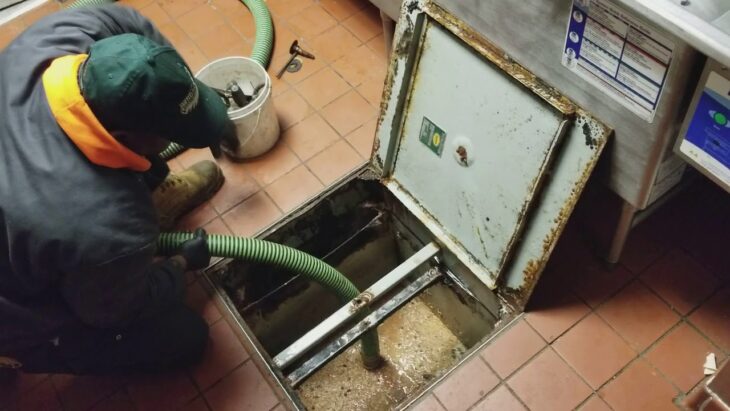
Source: youtube
Simply said, a residential grease trap also referred to as an oil converter/retrieval tool/interceptor, is a pipe addition that is created to prevent most oils and masses before they can enter your plumbing and sewer system. The size of the container can vary, but, it does range from 35 to 45.000 liters.
It can be manufactured from a wide range of substances such as cement, plastics, stainless steel, and even cast iron. The location of the pipe feature will depend on the home, but, it is most commonly situated in locations like the exterior or interior of the kitchen, and it can also be either below or above the earth.
An Easy DIY Guide For Maintaining The Oil Converter
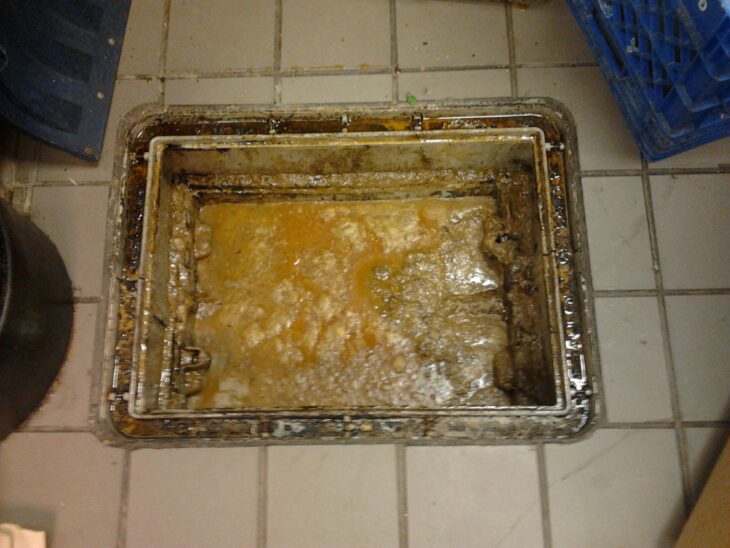
Source: kensewer
You might not know the location of the plumbing addition, the very first thing that you’ll need to do is locate the access cover. As mentioned earlier, it is most likely situated behind your house, close to the kitchen. It will be covered with a lid made from metal and once you figure out where it is, you can start going through the steps that include:
1. First Things First, Gather Your Equipment And Materials
In order for you to clean it, you’ll need to gather several simple tools and materials that you probably already have in your home. The things you’ll need include a garbage bin, a basin scoop, a garden hose, an eight-foot handle, a crowbar, a flashlight, as well as gloves, face mask, and old clothes that will protect you.
2. Get Dressed
Next, you’ll definitely want to wear old clothes, ones that you usually wear when working on other DIY projects. Cleaning it can be incredibly messy, hence, you should also put on gloves that will protect your hands. Additionally, you might want to consider wearing a face mask as well, since it will lower the odor coming from the residue.
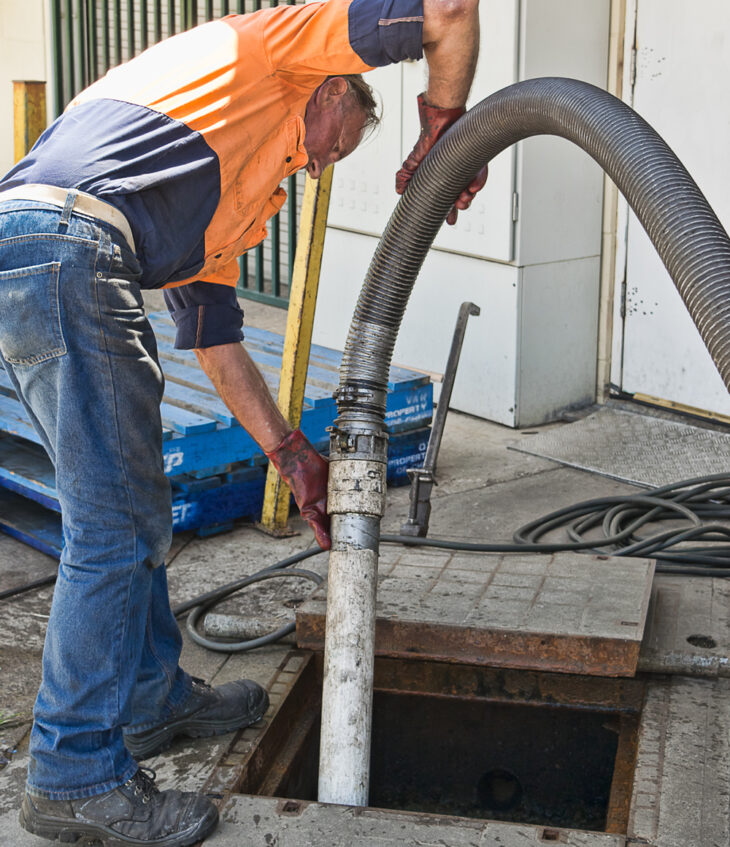
Source: pump-it
3. Take Off The Metal Cover
When you protect yourself and put on old clothes, the next step you should take is taking off the metal cover from the top of the plumbing addition. Now, you might need to use a crowbar for this, especially if you or other people did not open the container for a really long time.
4. Determine Whether There Are Debris
Once you are done with step three, you should carefully examine the inside of the containers in order to see whether or not there are any debris or other things that might be stuck inside. If there are, you should remove everything, especially since it can hinder you from finishing the rest of the steps.
5. Take Out The Oil
Now, this is the step where things might get a bit dirty. Place a plastic bag in the garbage bin and dip it into the area. Slowly pull it out and capture the residue on top, which should, in return, allow the water to drain through the holes that are located on the bottom. Once you do so, place the content of the scoop into the bin. If this is something you find quite messy and difficult, you can visit this website to see what professional cleaning services you can opt for.
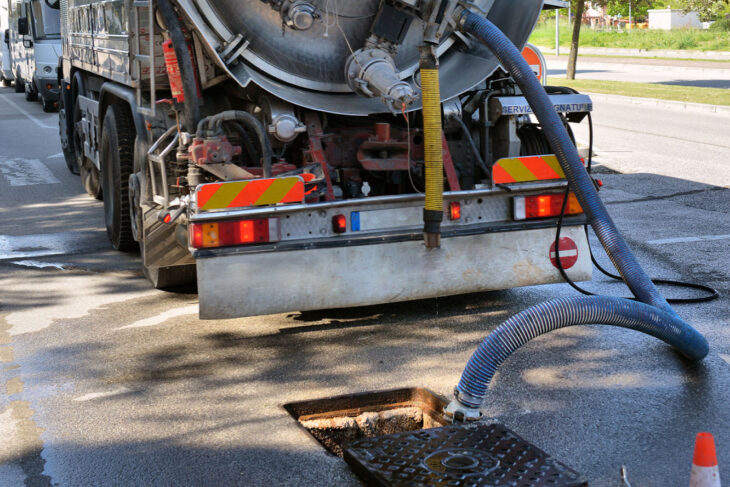
Source: canessco
6. Clean The Walls And Bottom
When you are done removing all or most of the residue, you should use the garden hose to remove any oil, grease, or debris that remained on the walls and bottom of the tank. It is easier for you to do this if you place a spray nozzle on the homes. When the water arises from cleaning the trap with the hose, do not forget to remove any grease that might appear.
7. Place The Metal Cover Back
So, if you are satisfied with how the trap looks on the inside, you should place the metal cover back on top of the trap. You should also run hot water at your kitchen sink for approximately 10 to 20 minutes since this will get rid of the thin layer of oil that might be left inside. Additionally, if the lid is damaged, think about replacing it with a new one.
The Benefits of Having a Residential Grease Trap
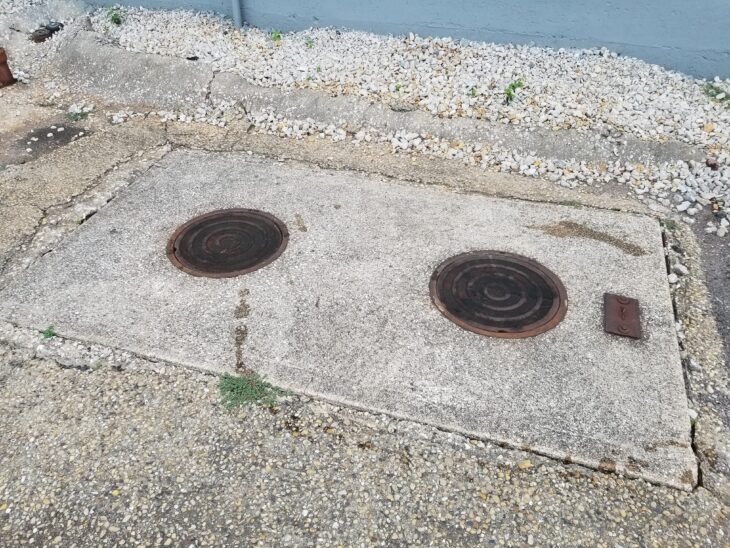
Source: ldseptic
There is a wide range of benefits that you can gain from having a grease trap, and the most important ones are:
1. It is Eco-Friendly – one of the most important things about these grease traps is that they are completely Eco-friendly, which means that they will keep our environment clean, and in return, reduce pollution. When you prepare food that is greasy, the fat, oil, and grease can flow into local rivers, which can become quite toxic over time.
2. It Can Save Money – you have no idea how much installing this plumbing addition can low the cost of expensive repairs if one of your pipes becomes blocked. If you maintain it properly and regularly, you won’t need to care about having a malfunctioning waste system.
Conclusion
Although it might seem like a difficult task, with the right tools and equipment, it is actually relatively easy to clean your residential grease trap. So, now that you know what you should do, you should not waste any more time. Instead, choose whether you’ll gather your tools and clean it by yourself, or if you’ll start looking for a professional grease trap cleaning service if you feel like the entire process is too messy for you.
